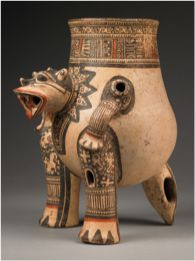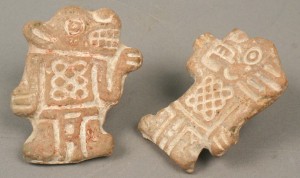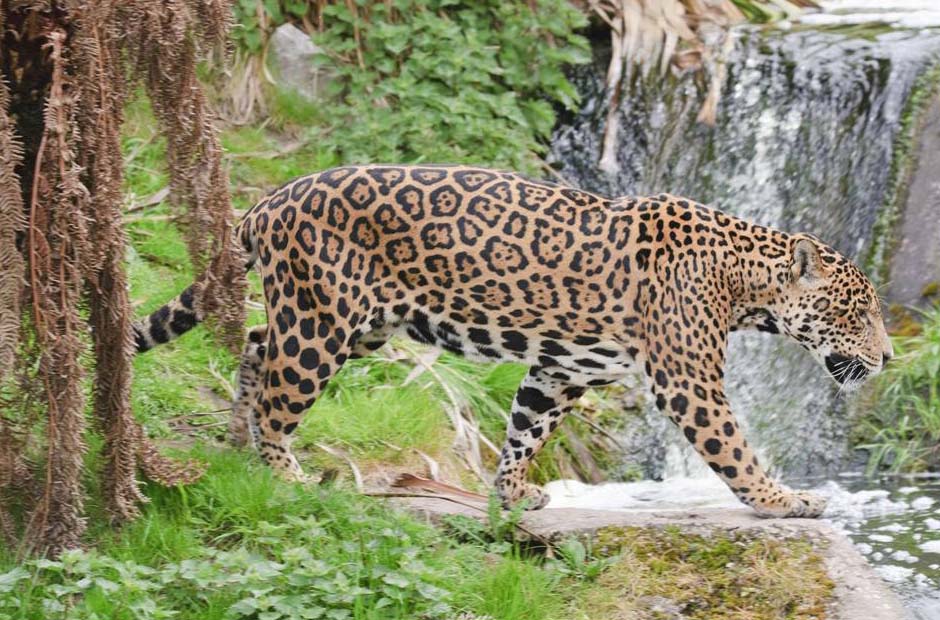
Tawny Jaguar-Shaman Effigy Vessel Central America, Costa Rica/Nicaragua, Greater Nicoya. Pataky Polychrome, Pataky Variety. Period VI, 1000-1350 AD. Ceramic. 1991.4.337. Ex coll. William C. and Carol W. Thibadeau. Photo by Bruce M White, 2008.
The most familiar type of jaguar has bold black spots all over a tan or buff coat. This ancient Costa Rican vessel represents the tawny jaguar as a shaman’s animal self, juxtaposing the low head carriage, long bloody teeth, sharp claws, and thick tail of a stalking cat with the vertical pose of a person in meditation. The “spotted” areas are partly cat and partly human, limited to the limbs, around the neck, and the vessel rim. These areas have been segregated and outlined with heavy double lines. In nature jaguars only lack spots on their noses and feet and do not have ruffs or manes, either. Shamanic art consciously avoids literal representations of animals since humans becoming their animal selves is the true artistic subject.

Jaguar/Human Figure Stamp Central America, Honduras. Late Ulua, 700-850 AD. Ceramic. 1990.11.125, .126. Gift of William C. and Carol W. Thibadeau. Photo by Julia Commander.
Two Honduran ceramic stamps help account for these artistic choices: they were used in antiquity to mark the human body with pigment for ritual occasions. Recently discovered remains of dark terracotta pigment on the surfaces of these stamps and white in the grooves indicate stamping with various colors. People would repeatedly imprint the pigmented stamps around their wrists, ankles, and other zones of their bodies; thus the bare and the patterned areas seen in the Costa Rican effigy above represent a decorated human rather than a cat in the wild. Some stamps show abstract spots, round or diamond, that capture the idea of jaguar spots (just as some cats, like the one pictured below, have a strongly diamond-shaped grid of markings). This pair of stamps depict standing humans in spotted tunics, but with feline heads.
In these creative ways, the Central American artists have come up with unique approaches to blend the shaman and his powerful animal self.

